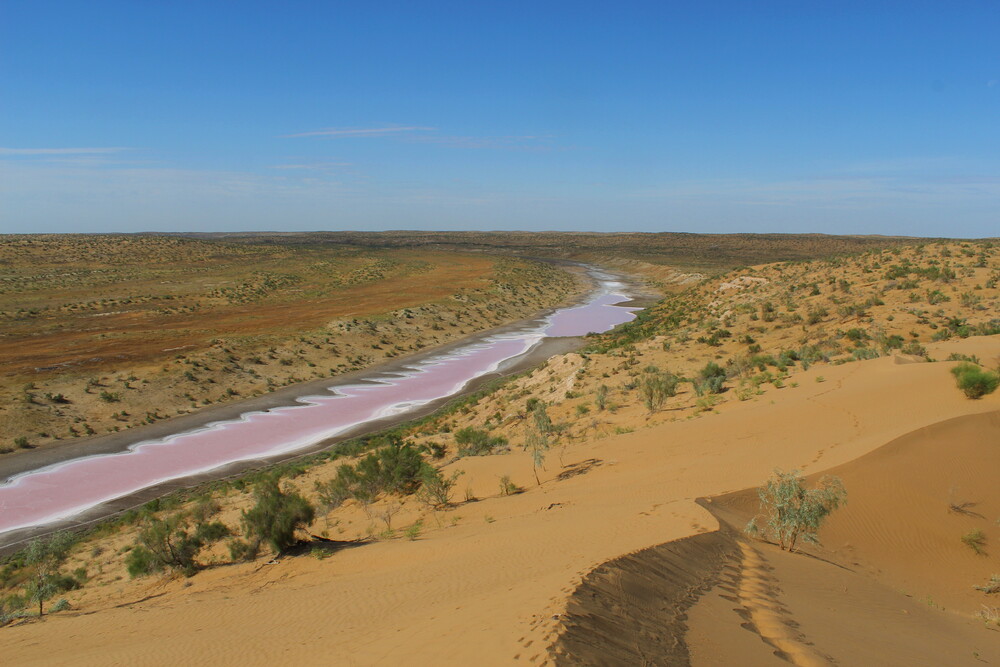nCa Report
The International Cold Winter Desert Conference in the framework of CADI (Central Asia Desert Initiative) was held 2-3 December 2021 in Tashkent.
In the next two parts of this ongoing report, we will reproduce one paper in full. After that, we will present selected passages from one or two more papers delivered at this conference.
* * *
First, we would like to quote a little bit from the welcoming address Dr. Josef Tumbrinck
Federal Ministry for the Environment, Nature Conservation and Nuclear Safety of Germany
Deputy Director General N I – Nature Conservation.
Addressing the conference participants through the video link from Germany – these were the Covid restriction days – he said, “This conference is about cold winter deserts – one of the key ecosystems of Central Asia. The countries of Uzbekistan, Turkmenistan and Kazakhstan harbour large parts of this ecosystem and, therefore, are crucial for the preservation of this surprising and beautiful biome. Cold winter deserts harbour highly specialized endemic species, high biodiversity, and important migration corridors for more than 300 bird species. They are one of few places in the world where ungulates like Kulan, Goitered Gazelle, Saiga Antelope and Urial migrate annually.
“Deserts provide a variety of ecosystem services of great economic, social, and cultural value on the local and global scale. For instance, the natural vegetation of Saxaul communities has the potential of being a globally important carbon sink.
“However, Central Asian desert ecosystems are considered a “critical or endangered” ecoregion. Cold winter deserts are still underrepresented in the regional and global network of protected areas. Also, they remain the only biome worldwide for which the United Nations Educational, Scientific and Cultural Organization (UNESCO) has not yet inscribed a World Natural Heritage site. But you know way better than me about the manifold challenges that we have to overcome to preserve this biome for future generations.”
* * *
In the next two parts of this series, we will reproduce a research paper read by Pavlenko, A. of Astrakhan State University (Russia) at the conference. The title of the paper was ‘Flora and vegetation of the Bereketli Garagum nature reserve.’
Bereketli Garagum (Bereketli Karakum) is one of the three protected areas (PA) in the Karakum Desert.
While the paper gives important findings of the research work done by the team led by Pavlenko, the reasons we are publishing it in full are many:
- We want to highlight the fact that a desert specialist needs to be an expert in a number of things and not just the nature of the desert.
- A substantial part of the life of a desert expert, like the life of an archaeologist, is spent away from the amenities and comforts of the normal city life.
- The desert scientists, in their long expeditions and study tours, are away from their family and other loved ones.
- Also like an archaeologist, the body of a desert scientist takes the toll of harsh elements – their complexion clouds, their skin becomes leathery, and they are prone to many diseases.
- The desert scientists need to impose on themselves strict discipline.
- The desert scientists need to be self-starters because usually in the field they are working under their own supervision.
The decision-makers and policymakers need to be attentive to the life and challenges of a desert scientist. In doing so, they need to continuously find ways to encourage the desert scientists. This entails a two-pronged approach: 1. Regular acknowledgment of their work at public forums; and 2. Generous and frequent financial and material rewards for their work.
We must never forget that the desert scientists, like the people in several other disciplines, have chosen a very difficult career path. They sacrifice much, they toil in solitude or a small company of their colleagues, and they don’t gain any direct benefits from their hard work. nCa, 14 May 2024 [to be continued]
